|

On eBay Now...
RARE HUGE Letter & Doc Archive 750+ Noyes Lumber 1880s Westport Pennsylvania PA For Sale

When you click on links to various merchants on this site and make a purchase, this can result in this site earning a commission. Affiliate programs and affiliations include, but are not limited to, the eBay Partner Network.

RARE HUGE Letter & Doc Archive 750+ Noyes Lumber 1880s Westport Pennsylvania PA:
$6500.00
HUGE - IMPORTANT - RARE Letter Archive
Massive Lumbering Archive of the Well-known Noyes FamilyMostly Charles R. Noyes, brother of Amos Noyes (PA Treasurer & Congressman)
Noyes, PA named after Amos770 Letters, Billheads, Documents, etc
Pertaining to Lumber BusinessWestport, Clinton County, PA
& Surrounding areas
1880s
For offer, a rare opportunity to buy a fresh unresearched and unread archive! Fresh from an old prominent estate. Never offered on the market until now. Vintage, Old, Original - NOTa Reproduction - Guaranteed !!
This massive collection was recently purchased from an elderly woman who saved it for generations. Charles and Amos Noyes were well known and respected citizens, involved in many things, but most notably the lumber business. Both men are prominently represented in Clinton County histories. Charles was Postmaster of Westport for decades, and held various other positions. His brother, Amos, eventually became involved in politics, and served as a Congressman and Pennsylvania Treasurer. Amos dies several years before Charles, and the majority of the items here involve Charles. A few items involve Amos. There are letters that mention Amos\'s death. Nearly all letters at TO Charles Noyes, in his business dealings in the lumbering business. I have another smaller group of letters dealing with politics that will be listed separately. Also, I will list a large group of postcards that came with this collection. Archived such as this rarely come on the market, and this one gives a very good look into the huge lumber business os the mid to late 19th century. I counted 770 pieces, including billheads, letters, a few postcards, billheads, letterheads, and various documents. Some letters are multiple pages, and I counted them as one letter. There are also some postal cover envelopes, which I did not count. I have not read most of this collection - I glimpsed here or there, but nearly all of them are unread, and I do not know all the content. Going by the letterheads, there are many lumber specific items, and also various legal and banking related letters and documents for the business. These are also in no particular order. I just showed them as I found - some were inside the envelopes and taken out. The condition is very good overall.Fold marks and possibly a small rip here or there. Please see photos and scans for all details and condition. If you collect19thcentury Americana advertisement ad history, United States business, writing, correspondence, etc.this is a nice one for your paper or ephemera collection. Genealogy research importance as well. Combine shipping on multiple items purchased. 3162
The Renovo Record, Fri., Sept. 22, 1893.Died.Death of Charles R. Noyes.He Expired Yesterday Morning At His Home At Westport.His Loss to the Community an Irreparable One.Cancer The Immediate Cause of His Death.Charles R. Noyes died yesterday morning at his residence at Westport this county, after an illness of about six months. He was taken sick with rheumatism. He spent several weeks last spring at the famous Sizerville mineral springs, under the care of an eminent physician, in the hope of effecting a cure. When he returned to his home he was feeling better and with encouraging signs of relief.About four months ago a cancerous affection appeared over his right breast. He paid little attention to its presence until it began to cause him pain. His physicians advised him to to to Philadelphia at once for treatment. He did so but the physicians believing that death would result. They pronounced it Osteo Sarcoma, a form of cancer under the right collar bone extending above and below to the chest. He returned home very much disheartened, without the slightest hope of recovery.Mr. Noyes was born in Grafton Co., N. H., Jan. 5th, 1829 and died in the 65th year of his age. He received an education in the public schools and the Newberg Methodist Academy in Vermont. He came to Westport in 1850 and acted as clerk for his brother, Col. A. C. Noyes, until 1854, when he became partner in his business, in storekeeping, lumbering, building railroads, &c. After the Colonel’s death he moved his family into the old mansion, located at the mouth of Kettle Creek, where they still reside. Mr. Noyes was a well known democrat. He held the position of postmaster from 1854 to 1891. He filled nearly all the township offices, and several times was sent to Harrisburg to represent the democracy of the county in state convention. He was a candidate for county treasurer in 1890, but was defeated by the present treasurer, Hon. S. W. Caldwell.Mr. Noyes was married to Mary A. Herman, a daughter of Michael Herman, on July 45th 1865. Their children are Hattie, Martha, Edward, Nellie, Bessie, Hannah, and Daisy, all of whom are living.The death of Mr. Noyes, will be a great loss to the people of both Noyes and Leidy townships. He was kind and charitable, helping all with a liberal hand. Funeral services will take place at his late residence at 1 o’clock Saturday afternoon. Rev. John D. Cook will preach the funeral sermon. Interment at Noyes cemetery.
Amos Clark Noyes (September 17, 1818 – September 4, 1880) was an American politician and business owner. Born in Grafton County, New Hampshire, he later moved to Pennsylvania, where he served on the Pennsylvania House of Representatives and as Pennsylvania Treasurer (1877–1880).
BiographyAmos Clark Noyes was born on September 17, 1818, in Grafton County, New Hampshire. His ancestors were of Scotch-Irish descent. Noyes became a prominent and highly respected figure in the state of Pennsylvania.[1] Noyes was also a prominent landowner and noted lumberman in the vicinity of the West Branch of the Susquehanna River in Pennsylvania.[citation needed]
Noyes was born to Rufus and Hannah Clark Noyes.[2] He taught school at the age of sixteen.[3] In 1847, he moved to Lockport, Pennsylvania, where he worked in the lumber business and was a dealer of general merchandise. He resided in Emporium, Cameron County, Pennsylvania for two years before relocating to Westport, Pennsylvania, in 1849, where he lived for many years and was known as “Square Timber Noyes.”[3] He served briefly as a colonel of militia in the run-up to the American Civil War, during which he was a prominent War Democrat.[4] As a contractor, Noyes was involved with the construction of the Clinton County Courthouse in Lock Haven, Pennsylvania, which was built between 1867 and 1869.[5]
Noyes was nominated as the Democratic candidate for the House of Representatives by the legislative districts of Lycoming and Clinton (in 1862).[1] He served a total of five one-year terms in office, from 1863–1865 and 1871–1873.[6] In 1875, at the Democratic State Convention in Erie, Pennsylvania, Noyes was a major, albeit unsuccessful, candidate for the party nomination for governor.[2] He was elected to the office of Pennsylvania Treasurer and served from 1877 to 1880.[6]
Noyes Township in Clinton County was named after Amos Noyes.[1][7][8] The Col. A.C. Noyes Castle, Knights of the Eagle, named for Noyes, was instituted in 1890 in Westport, Pennsylvania, with 49 members.[9]
Personal lifeNoyes was married on July 30, 1854, to Rebecca J., daughter of Charles and Hannah (Saltman) Stewart. Rebecca was born on September 10, 1833, in Westport, Pennsylvania, and like her husband came from an old Scotch family.[4]
The funeral of Amos Noyes took place on September 7, 1880.[4]BIOGRAPHICAL SKETCHES.
HON. AMOS C. NOYES.
Among the names of the men who have been prom-inent in the State of Pennsylvania, who have heldpositions of great responsibility and honor, we findthe name of Hon. Amos C. Noyes. Born in GraftonCounty, N. H., Sept. 18, 1817, he grew to man\'s es-tate therein, developing into a manhood as firm in itsintegrity, as grand in its conceptions of noblenessaud generosity as the granite rocks of his nativeState. His ancestors, as set forth in the biographyof his brother Charles, were of Scotch-Irish descent,and resided in New Hampshire from its earliest set-tlement. Until he had attained his majority he wasoccupied in agricultural pursuits connected with hisfather\'s farm, acquiring meanwhile the rudiments of auseful and practical education. He was then activelyengaged for a few years in general mercantile pursuits,meeting with varying success. Removing to Em-porium, Cameron Co., Pa., in 1847, he occupied him-self in the lumbering trade.\' In this business hecontinued until his death, which occurred Sept. 3,1880. In 1849 he moved from Cameron County toWestport, in Clinton County, Pa., where he continuedto reside until his death. In the lumbering businesshe met with great and merited success. He was atthe head of the firm of Noyes, Bridgens & Co., whowere at that time the largest square-lumber dealers onthe West Brand), and for many years his time wasengrossed by the cares incident to so large and ex-tensive a business, also by a growing interest in themomentous public and political questions then agi-tating the country, and whicli culminated ultimatelyin the civil conflict. During the Rebellion he was anactive and warmly-interested LTnionist, and exerted(2 . &, J^
/
CHAPMAN TOWNSHIP.
589
himself to the utmost in aiding to uphold the rightsand honor of his State and country. In politics,Col. Noyes (taking that title from a militia colonelcywhich he held some years before) was a Democrat,and during the civil war a war Democrat. In 1862his legislative district, then composed of Clinton andLycoming Counties, nominated him as the Demo-cratic candidate for the House of Representatives.Hon. James Chatham was the Republican nomineefor re-election. The previous year Mr. Chatluim hadcarried the district by four hundred majority. ThisCol. Noyes not only reversed, but added twelve hun-dred to it, making a change of sixteen hundred votes.His term, for which he had made such a gallant fight,was filled with such honest fidelity to his section andState that he was ag.ain put forward by his friends forthe same position and was again elected. In 1864,observing the two consecutive term rule, he was nota candidate. In 1868 he was a Presidential elector onthe Democratic ticket.
In 1870 his legislative district, which had been bythe apportionment changed to embrace Clinton, Cam-eron, and McKean Counties, again nominated himfor the Legislature. Cameron was a RepublicanCounty, and gave Schofield, the Republican candidatefor Congress, forty-five majority, while it gave Col.Noyes three hundred and fifty-eight Democratic ma-jority, and he was for the third time elected. In 1871his district was again changed to comprise Clinton,Lycoming, and Sullivan Counties, and was entitledto two members, and Col. Noyes was one of thoseelected to represent this district. In 1872 he was forthe fifth time elected to the Legislature. While act-ing in this capacity he served on several prominentcommittees, viz., the Committee on Ways and Means,on Corporation and Education, besides others of lessmagnitude and importance. While engaged in theseresponsible positions he evidenced at all times andunder all circumstances the possession of many neededand admirable qualities. When the internecine strug-gle was at its fullest and most menacing developmenthe was bold and fearless in speech and action, whilehe labored incessantly to increase the means and re-sources of the government, and effectively denouncedthe trickery of faithless partisans and officials. Al-though devoted to the interests of his party, and anenergetic and able ally and leader, he always sternlyrefused to use his talents in serving it when conscien-tiously opposed to its measures and operations. In1875, at the Democratic State Convention held at Erie,Col. Noyes was one of the most prominent candidatesfor the office of Governor. After a warm contest ofmany ballotings between his friends, Bigler and Barr,a compromise was finally made by nominating JudgePershing. In 1877 he was nominated by the Demo-cratic State Convention as its candidate for Statetreasurer, to which office he was elected, and whichhe filled with credit to himself and his State. Hewas also a member of the Board of Public Charities,
and was tireless in his efforts to make that organiza-tion prompt and effectual in its workings. Generouslyinterested in all matters of progress, im])rovement,and philanthropy, he did much to ameliorate thecondition of the poorer classes in the section ofPennsylvania where he resided, and was alwaysready to co-operate vigorously in all charitable enter-prises. As an orator. Col, Noyes was curt, incisive,logical, and convincing, wliile his plain and unlaboreddelivery was forcible and impressive. He died in theprime of life, honored and esteemed by all who knewhim, and still missed by his friends and neighbors asfew men are. He was married July 30, 1854, to MissRebecca J., daughter of Charles and Hannah (Salt-man) Stewart. She was born Sept. 10, 183.3, in West-port, Pa., and came of an old and honorable Scotchfiimily. The funeral of Col. Noyes took place Sept.7, 1880. Rev. J. J. Pearce, an old and esteemed friend,preached the sermon, paying a glowing tribute to thememory of the deceased, and attesting to his moralworth and stainless character. After the sermon JohnS. Bailey, Esq., read a biographical sketch of his lifefrom boyhood to the time of his death. The bodywas then taken in charge by the Masonic order, andproceeded to the place of burial, which had been se-lected a few days before by the deceased. The hearsewas preceded by Renovo Lodge, No. 495, of which hewas a member. A number of other lodges were inthe procession, as were many of the most prominentmen in the State, and hundreds of the hardy lumber-men, who came many miles to attend the burial oftheir deceased friend. It was the largest funeral everheld in Northern Pennsylvania, and well attested thelove and respect felt for him by all classes.
CHARLES R. NOYES.Prominent among the representative families ofClinton County we find the name of Noyes. Theirancestors were Scotch-Irish, and came, it is supposed,from the north of Ireland, and settled prior to theRevolutionary war in the southern part of the Stateof New Hampshire, where Nathaniel Noyes (the firstof the family of whom definite knowledge is had)was born. Soon after the war for independence he,with his family, moved to Grafton County, N. H., wherehe bought a farm, on which he remained until hisdeath. His wife was Miss Mary Harriman, and tothem were born six sons and two daughters, all ofwhom grew to man and woman\'s estate. The seventhof these was Rufus, who was born in 1789. He grewto manhood in his native county, and, like his father,turned his attention to farming. He married MissHannah Clark, who was of English extraction. Theirchildren were Amos C, James C, Hannah M., RufusH., Charles R., and Jennie, all of whom are stillliving, except Amos C. and Rufus H. Mrs. Noyesdied in 1846, at the age of fifty-three, and in August,1862, Mr. Noyes was thrown from a load of hay and
590
HISTORY OF CLINTON COUNTY, PENNSYLVANIA.
killed. Charles R. Noyes, our subject, was born inGrafton, Jan. 5, 1829. He grew to manhood on thehome farm, going to the district school winters andtwo terms at the Newbury, Vt., Methodist Seminary.Arrived at maturity, he started out in life for himself,his first work being on a farm at twelve dollars permonth. In 1850, Mr. Noyes joined his brother Amos,who was keeping a general store in what is now West-port, Clinton Co., Pa. He clerked for his brotheruntil 1854, when he became a partner. In 1859 theypartly closed out the mercantile business, and wenext find the brothers grading and building themason-work for the bridges of nine miles of the Phila-delphia and Erie Railroad. Their contract was com-pleted in two years. The brothers then devoted theirenergies mainly to lumbering, which has been Mr.Noyes\' principal calling ever since. He has an in-terest in many thousand acres of pine lands. InCameron County the firm is known as the \" Hunt\'sRun Lumbering Company.\" In Clearfield and Clin-ton Counties he is one of the firm of Carskaddon &Co. at Three Run. He is also owner, or nearly so, ofthe Noyes\' mill near Westport, a water-mill which heruns about nine months in thfe year. Mr. Noyeshandles principally square timber, round logs, andsawed lumber, and in a skilled way as his successattests. He has always been a Democrat in politics,but never an office-holder, save in his township,where he has been school director for nine successiveyears, and has also been Westport\'s postmaster since1854. By his neighbors and associates he is spokenof as a business man of sound judgment and sterlingintegrity, and whose word is as good as his bond. July4, 1865, he was married to Mary A., daughter ofMichael and Christina Herman. She was born June6, 1842. Their children are Hattie, Martha, Edward,Nellie, Harry, Bessie, Hannah V., and Daisy.Westport is an unincorporated community in Clinton County, Pennsylvania, United States. It lies above the Susquehanna River, along Pennsylvania Route 120.
According to the Historical View of Clinton County, Pennsylvania by \"D. S. Maynard\", Westport, Pennsylvania in Noyes Township was formerly known as Kettle Creek.[1] This is also mentioned on The Clinton County Register & Recorders Office website and other sources.[2][3]
The first settlement at the mouth of Kettle Creek was in 1785, when the land was a part of Pine Creek Township, Northumberland County, Pennsylvania.[4]
The Kettle Creek post office was established circa 1847 or 1848, but was discontinued, leaving the present community of Westport without a Post Office for about a year. In 1850, a new post office was established, but the name Kettle Creek was already taken by a post office located at the head of the Creek, so the name \"Westport\" was already in use, hence the current name.[4]
The first bridge that spanned the creek at Westport, was erected by Clinton County in 1852. The first railroad bridge, which was only a few feet away, was built in 1859. Both bridges were swept almost simultaneously by a flood on March 17, 1865, which caused severe damage. However, both bridges were eventually replaced.[1]Noyes Township is a township in Clinton County, Pennsylvania, United States. The population was 333 at the 2020 census,[2] down from 357 in 2010.[3]
HistoryNoyes Township was cut off and formed from Chapman Township in 1875, and was named in honor of Colonel A. C. Noyes, the most prominent citizen residing within the limits of the area. The first settlement in the territory was made around the time of the Revolution, or shortly after, on the lower, north side and near the mouth of Kettle Creek.[4]
Adjacent countiesPotter County (north)Lycoming County (east)Union County (southeast)Centre County (south)Clearfield County (southwest)Cameron County (west)Nearby:
CityLock Haven (county seat)BoroughsAvisBeech CreekFlemingtonLogantonMill HallRenovoSouth RenovoTownshipsAllisonBald EagleBeech CreekPorterWayneWest KeatingWoodwardCensus-designated placesCensus-designated places are unincorporated communities designated by the U.S. Census Bureau for the purposes of compiling demographic data. They are not actual jurisdictions under Pennsylvania unincorporated communitiesCooks wood industry or timber industry (sometimes lumber industry -- when referring mainly to sawed boards) is the industry concerned with forestry, logging, timber trade, and the production of primary forest products and wood products (e.g. furniture) and secondary products like wood pulp for the pulp and paper industry. Some of the largest producers are also among the biggest owners of timberland. The wood industry has historically been and continues to be an important sector in many economies.
DistinctionIn the narrow sense of the terms, wood, forest, forestry and timber/lumber industry appear to point to different sectors, in the industrialized, internationalized world, there is a tendency toward huge integrated businesses that cover the complete spectrum from silviculture and forestry in private primary or secondary forests or plantations via the logging process up to wood processing and trading and transport (e.g. timber rafting, forest railways, logging roads).[citation needed]
Processing and products differs especially with regard to the distinction between softwood and hardwood.[1][2][3][4][5] While softwood primarily goes into the production of wood fuel and pulp and paper, hardwood is used mainly for furniture, floors, etc.. Both types can be of use for building and (residential) construction purposes (e.g. log houses, log cabins, timber framing).[citation needed]
Production chainThis section is an excerpt from Wood production.[edit]Lumber and wood products, including timber for framing, plywood, and woodworking, are created in the wood industry from the trunks and branches of trees through several processes, commencing with the selection of appropriate logging sites and concluding with the milling and treatment processes of the harvested material. In order to determine which logging sites and milling sites are responsibly producing environmental, social and economic benefits, they must be certified under the Forests For All Forever (FCS) Certification that ensures these qualities.[6]
Lumber is wood that has been processed into uniform and useful sizes (dimensional lumber), including beams and planks or boards. Lumber is mainly used for construction framing, as well as finishing (floors, wall panels, window frames). Lumber has many uses beyond home building. Lumber is sometimes referred to as timber as an archaic term and still in England, while in most parts of the world (including the United States and Canada) the term timber refers specifically to unprocessed wood fiber, such as cut logs or standing trees that have yet to be cut.
Lumber may be supplied either rough-sawn, or surfaced on one or more of its faces. Beside pulpwood, rough lumber is the raw material for furniture-making, and manufacture of other items requiring cutting and shaping. It is available in many species, including hardwoods and softwoods, such as white pine and red pine, because of their low cost.[1]
Finished lumber is supplied in standard sizes, mostly for the construction industry – primarily softwood, from coniferous species, including pine, fir and spruce (collectively spruce-pine-fir), cedar, and hemlock, but also some hardwood, for high-grade flooring. It is more commonly made from softwood than hardwoods, and 80% of lumber comes from softwood.[2]
TerminologyIn the United States and Canada, milled boards are called lumber, while timber describes standing or felled trees.[3]
In contrast, in Britain, and some other Commonwealth nations and Ireland, the term timber is used in both senses. (In the UK, the word lumber is rarely used in relation to wood and has several other meanings.)
Re-manufactured lumberSee also: Timber recyclingRe-manufactured lumber is the result of secondary or tertiary processing of previously milled lumber. Specifically, it refers to lumber cut for industrial or wood-packaging use. Lumber is cut by ripsaw or resaw to create dimensions that are not usually processed by a primary sawmill.
Re-sawing is the splitting of 1-to-12-inch (25–305 mm) hardwood or softwood lumber into two or more thinner pieces of full-length boards. For example, splitting a 10-foot-long (3.0 m) 2×4 (1+1⁄2 by 3+1⁄2 in or 38 by 89 mm) into two 1×4s (3⁄4 by 3+1⁄2 in or 19 by 89 mm) of the same length is considered re-sawing.
Plastic lumberFurther information: Plastic lumber, Fiber-reinforced composite, and Wood-plastic compositeStructural lumber may also be produced from recycled plastic and new plastic stock. Its introduction has been strongly opposed by the forestry industry.[4] Blending fiberglass in plastic lumber enhances its strength, durability, and fire resistance.[5] Plastic fiberglass structural lumber can have a \"class 1 flame spread rating of 25 or less, when tested in accordance with ASTM standard E 84,\" which means it burns more slowly than almost all treated wood lumber.[6]
HistoryThe basic understanding of lumber, or “sawn planks,” came about in North America in the seventeenth century.[7] Lumber is the most common and widely used method of sawing logs. Plain sawn lumber is produced by making the first cut on a tangent to the circumference of the log. Each additional cut is then made parallel to one before. This method produces the widest possible boards with the least amount of log waste.[8]
Lumber manufacturing globally is determined by the preferred style of building; areas with a \"wood building culture\" (homes were built from wood rather than other materials like brick) are the countries with significant sawmilling industries. Historical wood-frame home building regions are: Europe, North America, China.[citation needed] Different areas of the world are recognized as significant timber suppliers; however, these areas (Indonesia, Sarawak, New Guinea, etc.) are exporters of raw logs and do not have a significant domestic lumber producing industry.
The largest lumber manufacturing regions in the world are: China (18%); United States (17%); Canada (10%); Russia (9%); Germany (5%); Sweden (4%).[9]
In early periods of society to make wood for building, the trunks of trees were split with wedges into as many and as thin pieces as possible. If it was necessary to have them still thinner, they were hewn, by some sharp instrument, on both sides, to the proper size.[10]This simple but wasteful manner of making boards is still continued in some places.
Otherwise, logs were sawn using a two-person whipsaw, or pit-saw, using saddleblocks to hold the log, and a pit for the pitman who worked below.
In 1420 the island of Madeira – an archipelago comprising four islands off the northwest coast of Africa and an autonomous region of Portugal – was discovered. King Henry VI[clarification needed] sent settlers to Madeira and ordered sawmills to be erected for the purpose of cutting the various species of excellent timber with which the island abounded. About 1427, the first sawmill in Germany was built.[10]
Cornelis Corneliszoon (or Krelis Lootjes) was a Dutch windmill owner from Uitgeest who invented the first mechanical sawmill, which was wind-powered, on December 15, 1593. This made the conversion of log timber into planks 30 times faster than previously.[11]
The circular saw, as used in modern sawmills, was invented by an Englishman named Miller in 1777. It was not until the nineteenth century, however, that it was generally applied, and its great work belongs to that period. The first insertable teeth for this saw were invented by W. Kendal, an American, in 1826.[12]
Logging in the American colonies began in 1607 when the Jamestown settlers cut timber to build the first settlement in the new world.[13] America\'s first sawmill was built at the Falls of Piscatauqua, on the line between the Province of Maine and the Province of New Hampshire, in 1634. Unauthenticated records, however, claim that as early as 1633 several mills were operating in New Netherland.[10]
The American colonies were essential to England in the role of supplier of lumber for the British fleet. By the 1790s New England was exporting 36 million feet of pine boards and at least 300 ship masts per year to the British Empire.[13] The timber supply began to dwindle at the start of the twentieth century due to significant harvest volumes, so the logging industry was forced to seek timber elsewhere; hence, the expansion into the American West.[14]
Conversion of wood logs
A sawmill with the floating logs in Kotka, FinlandLogs are converted into lumber by being sawn, hewn, or split. Sawing with a rip saw is the most common method, because sawing allows logs of lower quality, with irregular grain and large knots, to be used and is more economical. There are various types of sawing:
Plain sawn (flat sawn, through and through, bastard sawn) – A log sawn through without adjusting the position of the log and the grain runs across the width of the boards.Quarter sawn and rift sawn – These terms have been confused in history but generally mean lumber sawn so the annual rings are reasonably perpendicular to the sides (not edges) of the lumber.Boxed heart – The pith remains within the timber, post or beam, with some allowance for exposure.Heart center – the center core of a log.Free of heart center (FOHC) – A side-cut timber, post or beam without any pith.Free of knots (FOK) – No knots are present.Dimensional lumber
A common 50 by 100 mm (2 by 4 in) boardDimensional lumber is lumber that is cut to standardized width and depth, often specified in millimetres or inches. Carpenters extensively use dimensional lumber in framing wooden buildings. Common sizes include 2×4 (pictured) (also two-by-four and other variants, such as four-by-two in Australia, New Zealand, and the UK), 2×6, and 4×4. The length of a board is usually specified separately from the width and depth. It is thus possible to find 2×4s that are four, eight, and twelve feet in length. In Canada and the United States, the standard lengths of lumber are 6, 8, 10, 12, 14, 16, 18, 20, 22 and 24 feet (1.8, 2.4, 3.0, 3.7, 4.3, 4.9, 5.5, 6.1, 6.7 and 7.3 m). For wall framing, precut \"stud\" lengths are available, and are commonly used. For ceilings heights of 8, 9 or 10 feet (2.4, 2.7 or 3.0 m), studs are available in 92+5⁄8 inches (2.35 m), 104+5⁄8 inches (2.66 m), and 116+5⁄8 inches (2.96 m).[citation needed]
North American softwoodsThe length of a unit of dimensional lumber is limited by the height and girth of the tree it is milled from. In general the maximum length is 24 ft (7.32 m). Engineered wood products, manufactured by binding the strands, particles, fibers, or veneers of wood, together with adhesives, to form composite materials, offer more flexibility and greater structural strength than typical wood building materials.[15]
Pre-cut studs save a framer much time, because they are pre-cut by the manufacturer for use in 8-, 9-, and 10-foot ceiling applications, which means the manufacturer has removed a few inches or centimetres of the piece to allow for the sill plate and the double top plate with no additional sizing necessary.
In the Americas, two-bys (2×4s, 2×6s, 2×8s, 2×10s, and 2×12s), named for traditional board thickness in inches, along with the 4×4 (89 mm × 89 mm), are common lumber sizes used in modern construction. They are the basic building blocks for such common structures as balloon-frame or platform-frame housing. Dimensional lumber made from softwood is typically used for construction, while hardwood boards are more commonly used for making cabinets or furniture.
Lumber\'s nominal dimensions are larger than the actual standard dimensions of finished lumber. Historically, the nominal dimensions were the size of the green (not dried), rough (unfinished) boards that eventually became smaller finished lumber through drying and planing (to smooth the wood). Today, the standards specify the final finished dimensions and the mill cuts the logs to whatever size it needs to achieve those final dimensions. Typically, that rough cut is smaller than the nominal dimensions because modern technology makes it possible to use the logs more efficiently. For example, a \"2×4\" board historically started out as a green, rough board actually 2 by 4 inches (51 mm × 102 mm). After drying and planing, it would be smaller by a nonstandard amount. Today, a \"2×4\" board starts out as something smaller than 2 inches by 4 inches and not specified by standards, and after drying and planing is minimally 1+1⁄2 by 3+1⁄2 inches (38 mm × 89 mm).[16]


RARE Huge 3.6" Crazy Lace Agate Sphere, Crystal Ball $419.00
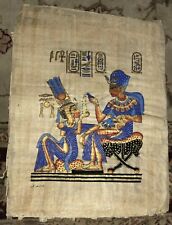
Rare Huge 18”x14” Authentic Hand Painted Ancient Egyptian Papyrus $185.00
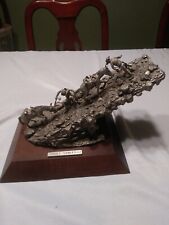
RARE HUGE PEWTER STATUE UPHILL STRUGGLE HY LEVENS HORSES $336.56

ANTIQ,Rare,Huge HandCrafted Genuine Solid Brass Lobster ,Removable Lid 17x13x4in $325.00
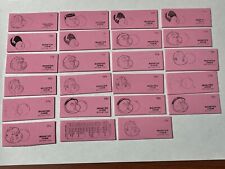
Huge Rare Lot of 2018 SSFC Series 1 Lunchbox Leftovers 23 Stale Gum Pieces $49.99
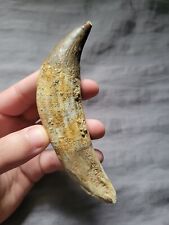
Rare Huge Basilosaurus Mammal Eocene Cetacean Tooth Fossil Morocco $150.00
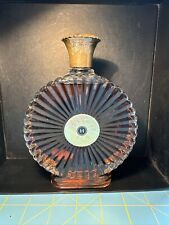
RARE Huge Chantilly by Houbigant, Paris New York Eau de Toilette 8 Oz perfume $145.00

RARE Huge Lycosidae (Wolf Spider), Fossil inclusion in Burmese Amber $400.00
|